 To Execute a Sample Project for the Inbound
Mode
To Execute a Sample Project for the Inbound
Mode
-
Install HL7eWay.sar file to the Sun Java CAPS Repository.
For steps, see Installing the TCP/IP HL7 Adapter and Sample Projects in Sun Adapter for TCP/IP HL7 Tutorial.
-
Start the NetBeans IDE and use the NetBeans Plugins Manager to install the HL7 adapter nbms to NetBeans IDE.
-
Re-start the Netbeans IDE and establish connection to the Sun Java CAPS Repository.
-
Create a CAPS Environment for the prjHL7Inbound project.
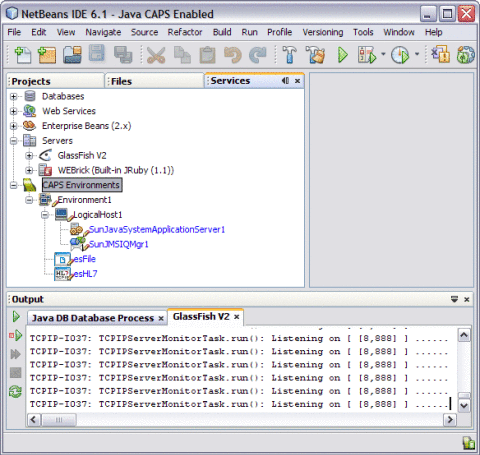
-
Import the HL7 project prjHL7Inbound.zip that is bundled with HL7eWay.sar into NetBeans IDE
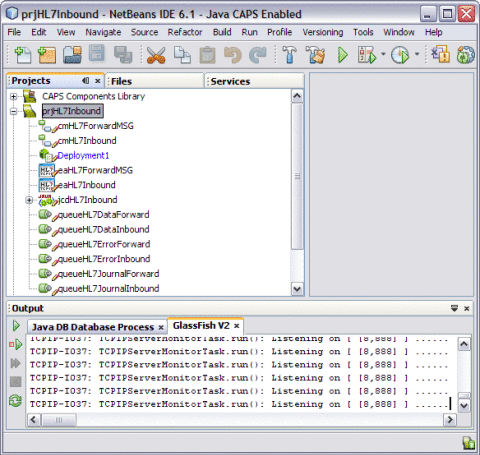
-
Create the Deployment Profile and select Check Out...
The Check Out... option enables users to modify the created Deployment Profile for prjHL7Inbound.
-
Click the Automap button to map the created environment files.
Note –Ensure to start the GlassFish V2 sever before deploying.
-
Click Build to build the project.
The following message is displayed after the build is successful.
Project buld was successful (elapsed time: 120.562 seconds).
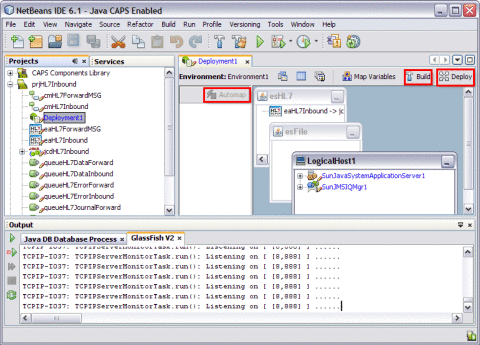
-
Click OK.
-
Click Deploy button to deploy the project onto GlassFish V2 Application Server from the NetBeans IDE.
This action displays the following message.
Project deployment successful (elaspsed time: 49 seconds).
-
Open a Web Browser and login to the Enterprise Manager at the following path:
http://localhost:portnumber
The default portnumber is 15000.
-
Expand the tree from the Explorer frame of the eManager GUI and select the prjHL7Inbound/Deployment1/cmHL7Inbound/eaHL7Inbound external system.
-
Select the Monitor external Connection action of the tree from the eaHL7Inbound => jcdHL7inbound1 frame.
This action displays the screen as shown below.
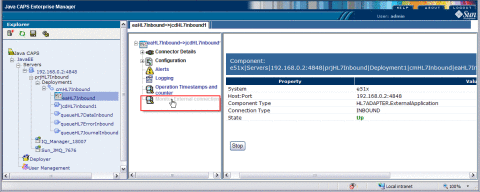
-
Start multiple HL7 external system and continue to send requests to the HL7 inbound project. Follow the Monitor External Connection link to observe the status of the external systems connection.
-
Terminate one of the external systems and observe that the status information of the terminated system does not appear in the status table
-
Execute the sample project using HL7 Simulator.
Here, is a sample illustration.
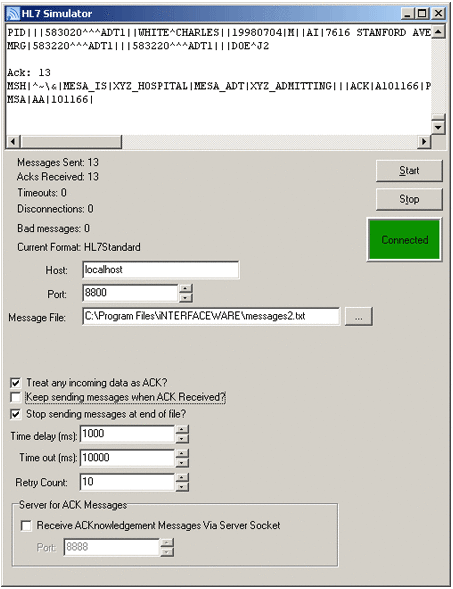
- © 2010, Oracle Corporation and/or its affiliates
